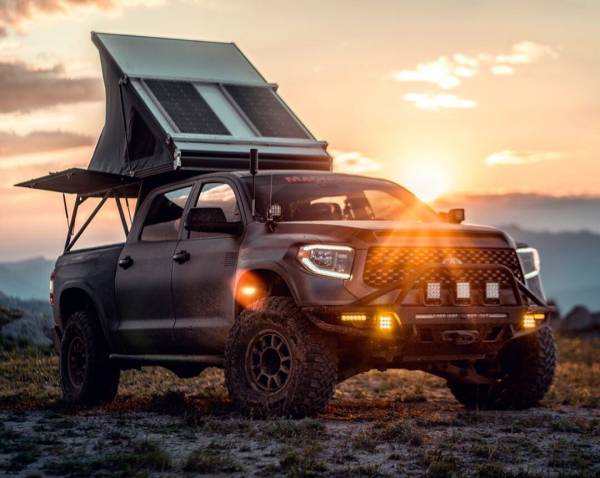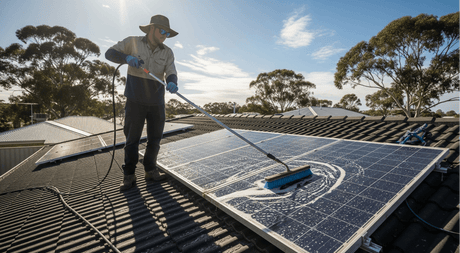As solar energy becomes more and more common, many people wonder exactly how these installations work. It’s safe to say we all understand that the energy captured from the sun doesn’t just “plugin” to our homes. And we all know the basics of how batteries can store energy for later use.
But how do the solar panels and a battery bank ultimately power our devices? That’s where a pure sine wave inverter comes into play. Most solar panel kits don’t include power inverters because how you plan to use the solar panels will determine which inverter you’ll need.
What Is a Pure Sine Wave Inverter?
One component of any solar installation needs to be a pure sine wave inverter. This device converts the energy gathered by the solar panels, which is direct current or DC, into alternating current, or AC.
To do this, a pure sine wave inverter releases voltage as sine waves. Sine waves are something you probably learned about in middle school science class. On a graph, they look a lot like an entertaining roller coaster with smooth slopes up and down. A pure sine wave inverter outputs voltage as sine waves because that is also what utilities provide as voltage.

The items in your home, RV, or cabin run on AC power, which is why a pure sine wave inverter is recommended in most cases. You can think of it as the bridge that connects your solar panels to your appliances safely.
What Is a Pure Sine Wave Inverter Used For?
Anyone who wants to set up home solar panel kits connected to the grid needs to use a pure sine wave inverter. That way, whether your appliances are running from the grid or using converted solar energy, they can switch between sources smoothly. Plus, newer or more sensitive electronics can only run on AC sine waves, such as AC-powered appliances like refrigerators and microwaves, newer TVs, and digital clocks.
Another valuable aspect of including a pure sine inverter with your solar panels is that many computers hooked up to the system will receive the voltage they need without the possibility of overcharging or undercharging. Some other types of sine wave inverters are known to decrease laptop and cell phone batteries’ lifespan.
Besides being ideal for computers, a pure sine wave inverter is required for any sensitive medical equipment, such as CPAP machines, lift chairs, or ventilators. Without a pure sine wave inverter, these devices could overload and fail.
Do You Really Need a Pure Sine Wave Inverter?
Basically, anyone whose home, RV, or tiny home solar installation will be used for appliances and electronics should purchase a pure sine wave inverter. Not only do some devices require it to run smoothly and safely, but a pure sine wave inverter is also energy efficient and helps reduce your energy bill even further by providing extended power backup.
The best way to determine how many solar panels you need and what size sine wave inverter you need is to use the Renogy solar panel calculator. Once you know the DC rating for your chosen solar panel system, you can select an inverter with around the same watts. For example, if you calculate your home needs a 3000-watt solar system, you’ll need a 3000-watt inverter for it.
Pure Sine Wave vs. Modified Sine Wave Inverters
As mentioned, a pure sine wave inverter converts your solar energy from DC to AC. However, there is another type of wave inverter for solar panels called a modified sine wave inverter. These inverters create modified sine waves that switch between positive and negative. Instead of a smooth slope on a graph, the waves look a lot more like multiple sets of stairs going up and down.
Modified sine wave inverters are an older technology that doesn’t work well with sensitive equipment like newer electronics and medical equipment. Also, modified sine wave inverters usually cause a low humming noise to emit from certain devices.
A modified sine wave inverter might be a reasonable option for small solar panel kits used in RVs or tiny homes. Still, even if you plan on charging a laptop or running a large enough refrigerator or newer TV, it might not be worth the risk.
Modified sine wave inverters are less expensive than pure sine wave inverters because the technology is a bit more outdated, so newer technology is often not totally compatible. Even if you have a device that works using a modified sine wave inverter, it will likely run hot and be a potential fire hazard.
In other words, unless the solar panel system you’re going to set up is off the grid and will only be used with very basic devices, it’s best to invest in a pure sine wave inverter. That way, you know everything is compatible and safe.
Plus, some pure sine wave inverters can also charge and maintain a battery bank when connected to shore power, a bonus for those looking to install solar panels on their boat or waterfront cabin.
Which Is the Best Pure Sine Wave Inverter?
When it comes to a pure sine wave inverter, the best choice is likely the Renogy 3000-watt inverter. This 12V solar inverter produces smooth, clean, reliable electricity to any off-grid system and acts as a good alternative for when a system on the grid wants to switch over for a time. Plus, it comes with a remote control to easily power it on and off when you need it and save energy when you don’t. It also comes with a 1-year material and workmanship warranty.
Conclusion
Solar panel systems are an excellent form of renewable energy that are a worthy long-term investment. Whether they are connected to a home, RV, or tiny house on or off the grid, they offer an alternative energy source that otherwise may not be available.
However, to have a solar energy system running its best, a pure sine wave inverter is necessary. It creates smooth, safe electricity and is compatible with more recent technological devices and medical equipment. For peace of mind and the most energy-efficient setup possible, invest in a pure sine wave inverter.







![What Is a DC to DC Battery Charger [Comprehensive Guide]](http://au.renogy.com/cdn/shop/articles/IMG_3829_bd86de74-31d6-49fd-b9d5-265bb723091d.jpg?v=1757582605&width=460)


